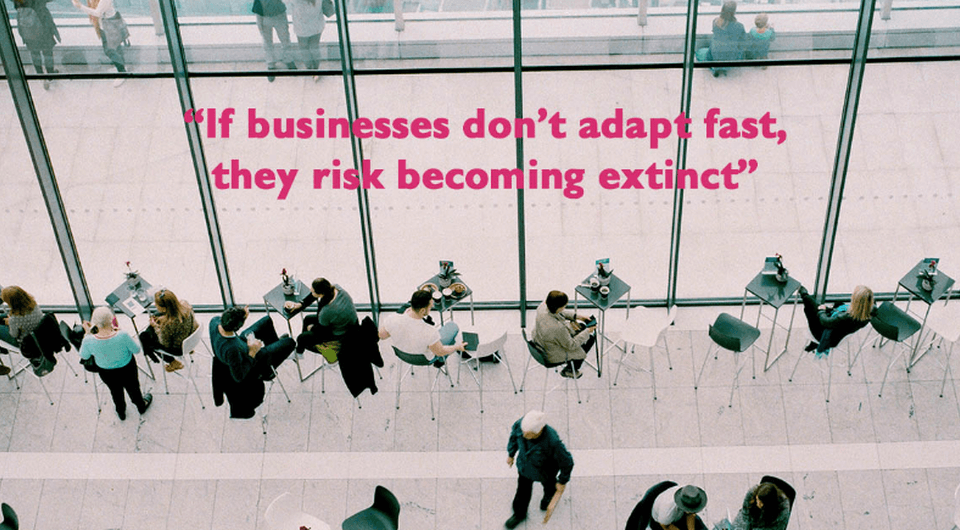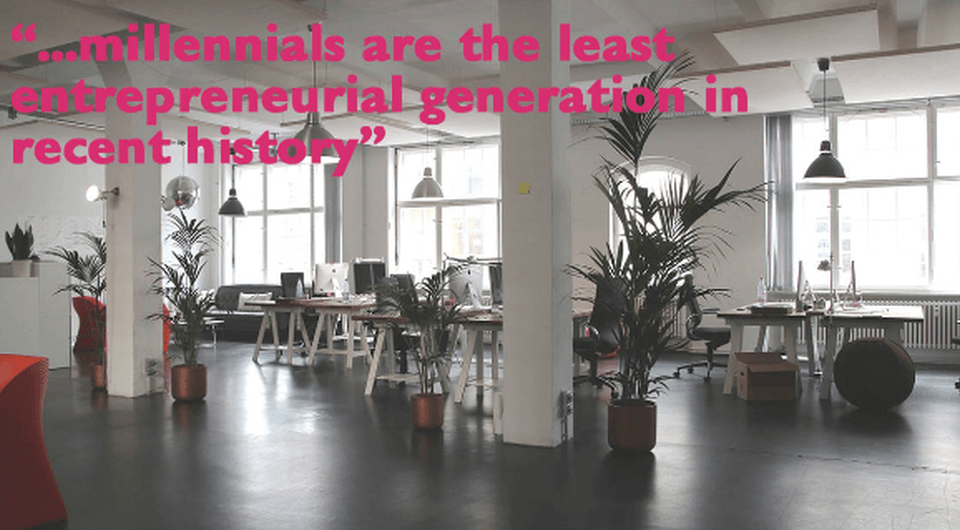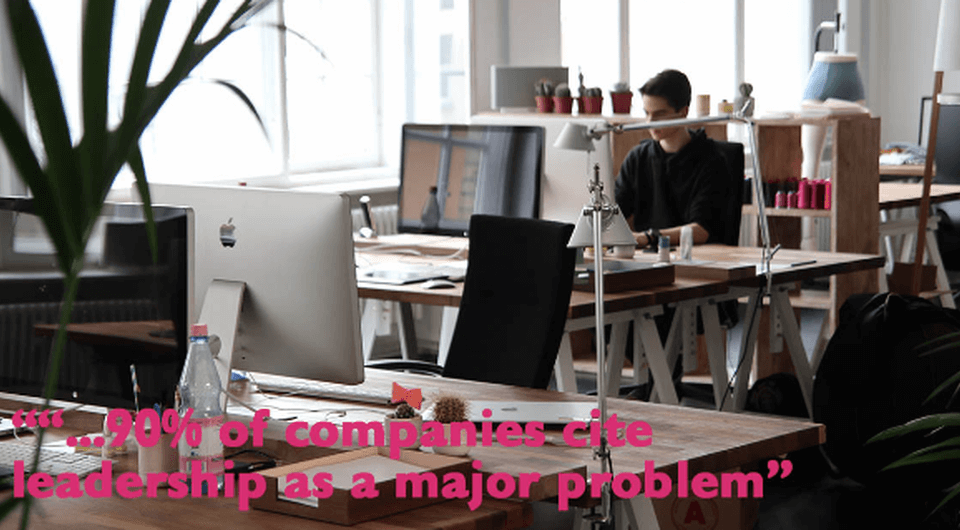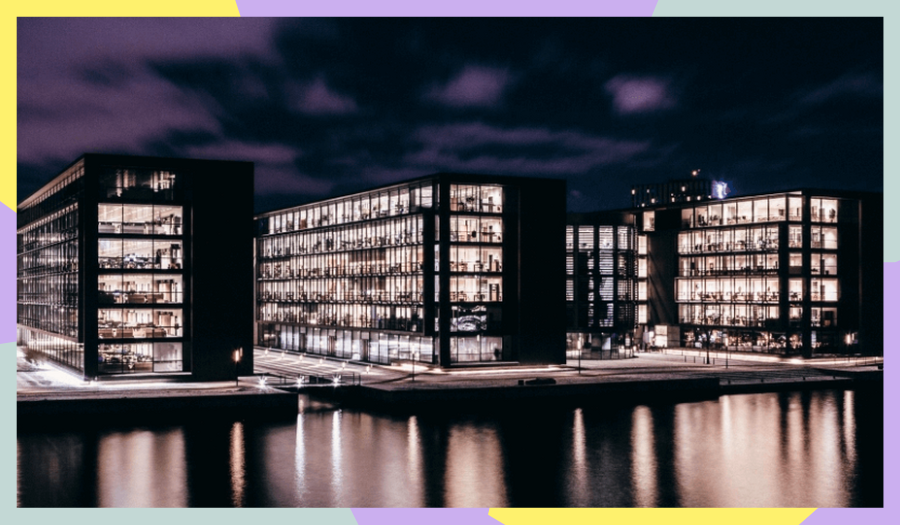As organisational change moves to the top of the agenda, we’re seeing the emergence of new, disruptive management structures.
According to research by Deloitte, 50% of the global workforce is made up of millennials. Forrester Research predicts they will represent 75% of the workforce by 2025.
Beyond the generational impact, other concerns for businesses include the new digital workers, global remote working, robots, artificial intelligence, and a rise in temporary workers.
After decades of operating and being structured much in the same way, businesses are starting to realise that their current way of working is limiting their productivity, their ability to innovate, and ultimately their growth, as well as preventing them from recruiting high-quality millennial talent.
The strategies that employers use to attract and retain vital millennial employees are changing. CEOs fear that they won’t be able to find the talent they need to succeed. Competition is fierce and companies need to think about how they will stay ahead of the curve, in order to attract the workforce that will take them into the future.
So, what does the workplace of the future look like?
CORPORATE ENTREPRENEURSHIP
Today, there is much debate about “millennial entrepreneurship”. The reality is that millennials are the least entrepreneurial generation in recent history. According to research conducted by the Wall Street Journal, the share of people under 30 who own a business has fallen by 65% since the 1980s. Additionally, the average age of a successful start-up founder is 40 years old (according to the Kauffman Foundation). In 2014, less than 2% of millennials were self-employed, compared with 7.6% for Generation X and 8.3% for Baby Boomers. Why the decline?
Between student debt, which the UK leads in the English-speaking world with an average of £44,000 per student, corporate dominance of large industries such as retail and technology, and the increasing impossibility of getting onto the housing ladder, it’s no surprise that the most important thing millennials crave is job security. This is according to a survey conducted by ManpowerGroup, which used a sample size of 19,000 21 to 36 year olds across 25 countries.
So why should corporate entrepreneurship be considered and encouraged? Although entrepreneurship is at an all-time low, millennials do have an entrepreneurial mentality, which unfortunately hasn’t translated into activity, largely due to financial barriers and increased risk aversion caused by financial insecurity.
Research by Ernst & Young showed that 62% of millennials have considered starting their own business, and 72% believed that entrepreneurship was essential for promoting innovation and jobs.

THE NEW WORKPLACE
The appetite for entrepreneurship is very much there, so the workplace cultures of the future must promote the core ideals of entrepreneurship to remain attractive to millennials – freedom, flexibility, empowerment, and ownership of what you do. The new workplace culture will provide the possibility for remote working because, ultimately work doesn’t need to get done in the office. In the US, 24% of Americans work remotely on a weekly basis so there is clearly an upward trend. A PwC study showed that 64% of millennials would like to occasionally work from home. This is a massive cultural step from the old world and one that some businesses will struggle to cope with. To earn commitment and loyalty from a millennial workforce that is considered “loyalty-lite” (according to PwC, over a quarter of millennials expect to have six or more employers compared with just 10% in 2008) the workplace of the future must begin by building its culture around the working styles and desires of its audience and workforce.
Millennials are gravitating to the organisations and jobs that they want, not need. 60% of millennials care about purpose and values. 89% of millennials want to be constantly learning in their roles. 72% of millennials want to be their own boss. With these insights in mind, it’s clear the workplace of the future must provide opportunity for self-management and freedom, as well as create a sense of purpose through a defined mission and value-set. To redesign the organisation, it needs to first understand the desires and needs of the workforce it’s trying to attract and retain.
ORGANISATIONAL DESIGN FOR THE NEW GENERATION – THE RISE OF THE NETWORK OF TEAMS
According to a survey by Deloitte, 92% of executives see organisational design as a top priority. 20th century organisational structures that are hierarchical and focus on top-down management and decision making, for instance, are being redesigned, as new concepts like flatarchies – essentially team structures rather than hierarchical ones – and networks of teams across cross functional disciplines are being investigated.
Beyond the generational pressures, there are other advantages to new and more modern structures. Fewer layers means more agile and creative businesses. More team-focused working leads to collaboration and a better customer experience. Organisations need to be redesigned with the purpose of being able to rapidly react and adapt to changes in market, technology, customer preferences, and competition. This new collaborative environment is further strengthened through technology. Whether it be Slack or Skype, technology is allowing businesses to increase collaboration across teams, levels, and geographies.
The rise of teams will be one of the biggest organisational changes of the next few years and this deconstruction of hierarchy will be a real challenge for most. These teams will be connected by a few key things: shared values and culture, transparency, clear and visible goals, and a rewards structure that is connected to performance, not job title and position.
If businesses don’t adapt fast, they risk becoming extinct. A Harvard Business School paper, in a competitive market, organisations benefit from taking measures to maximise efficiency, such as shredding layers. Future workplaces must consider this by providing new structures and tools that enable collaboration and flexibility.
Beyond teams, access to information and strong communication networks will become the new norm.
FOSTERING A CULTURE FOR INNOVATION
This new team structure means nothing without the right culture – across the business world, executives and HR professionals are already offering incentives, acquiring smaller and more disruptive businesses, and they are reforming the organisation from a structural point of view. But, the workplace of the future must also consider the cultural factor.
There are many ways of doing this but we’ve boiled it down to the following areas: Engagement, Environment, and Authenticity.

WITHOUT ENGAGEMENT, INNOVATION CANNOT EXIST
The workplace of the future will need to allow their employees to take ownership, to work in the way they like to work, and to make independent decisions. They will also need to be engaged with the bigger picture by making them feel connected with this. HR departments will be key in driving this by providing the tools and structures that allow engagement to develop. Learning on-demand (for example, online courses) for instance is critical and HR teams will need to look at how they can roll out new technology and initiatives to build a more engaged workforce.
AN ENVIRONMENT THAT ENCOURAGES INNOVATION
The physical space in which a business operates says a lot about its culture. It’s the body language of the organisation. Companies must design environments and cultures that communicate that there’s flexibility, a work/life balance, and benefits that stand out from other businesses.
Samsung recently designed a new office space in Silicon Valley, which houses a series of Green Floors with gardens and places where people can meet to develop new ideas, have meaningful conversations, and develop innovation. According to their VP Scott Birnbaum, “The most creative ideas aren’t going to come whilst sitting in front of your monitor, [workspace needs to be] designed to spark not just
Engagement comes in many forms. To build an effective innovation micro-ecosystem, businesses must allow interesting career paths and fast. Beyond this, clear direction and a feeling of empowerment creates a more engaged workforce.collaboration, but that innovation that you see when people collide.”
AUTHENTICITY IS DRIVEN THROUGH AN ALIGNMENT OF CULTURE TO BUSINESS GOALS
A culture of innovation is often part of the DNA of any successful start-up. For bigger corporations, sustaining this is a lot harder but to build the right culture and to keep a new millennial workforce engaged, authenticity is key. Millennials want purpose, to contribute, and they want to be proud about where they work. Further, employers must implement policies that encourage the needs and desires of this new and powerful workforce. For example, by enabling a culture that has a “work anywhere” rule, rather than just making it an exception means that trust is placed firmly within the company culture.

ENGAGEMENT, ENVIRONMENT, AND AUTHENTICITY IS GREAT, BUT EVOLUTION COMES FROM A CHANGE IN TRADITIONAL LEADERSHIP
According to Deloitte, 90% of companies cite leadership as a major problem. The leaders of the future workplace are being asked to move away from positional leadership to team leadership. This requires a very different skillset that is fuelled by passion, energy, and empowerment. It’s also a big cultural shift.
Top-down leadership impedes growth and innovation as well as jarring with the needs and desires of the new millennial workforce. According to a Steelcase Global Report, 58% of executives still work in private offices, compared to only 23% of employees. But executives are under pressure to explore new ways to lead. The world is changing fast and large corporations are constantly being challenged by smaller, more disruptive start-ups. Added to this, millennials tend to move around more frequently than previous generations.
If employees are made to feel like they’re just following orders then job satisfaction suffers and employers risk losing team members. Millennials want to feel like they’re making a difference and they need to be engaged in a very different way.
Command and control leadership will be removed and replaced through leadership that empowers teams. It’s about setting the direction of a project and allowing the team to dictate the method and process to achieving it.
The traditional leadership structure is probably one of the toughest challenges to organisational change as fundamentally there is a big generational and cultural gap. Essentially, HR needs to challenge leadership to change. Leaders must become coaches, mentors, and teachers.
As wellas that, it is important to remember that today’s millennials are tomorrow’s leaders, and maintaining this pipeline is essential for business longevity. A new organisational model is needed and it’s one that allows people to operate across many different teams effectively. These new leaders will understand how to drive innovation, how to engage a dynamic workforce, and know how to inspire those around a common mission. How we create these leaders must change and new methodologies, such as design-thinking, must brought into the leadership lexicon so that the next generation are equipped for business evolution.
We have no doubt that 2017 will be a major year for organisational design. Whether it be fuelled by the need to attract and retain the millennial workforce or the continued threat of disruption, the businesses of the future must innovate to survive.
Businesses will need to spend looking deep into their organisations to identify the structures, tools, and culture that will help them compete in this new world.
Curious to hear more insights, find your next role, or talk all things innovation? Be sure to message Drew Welton, or register with us to stay in the know!



